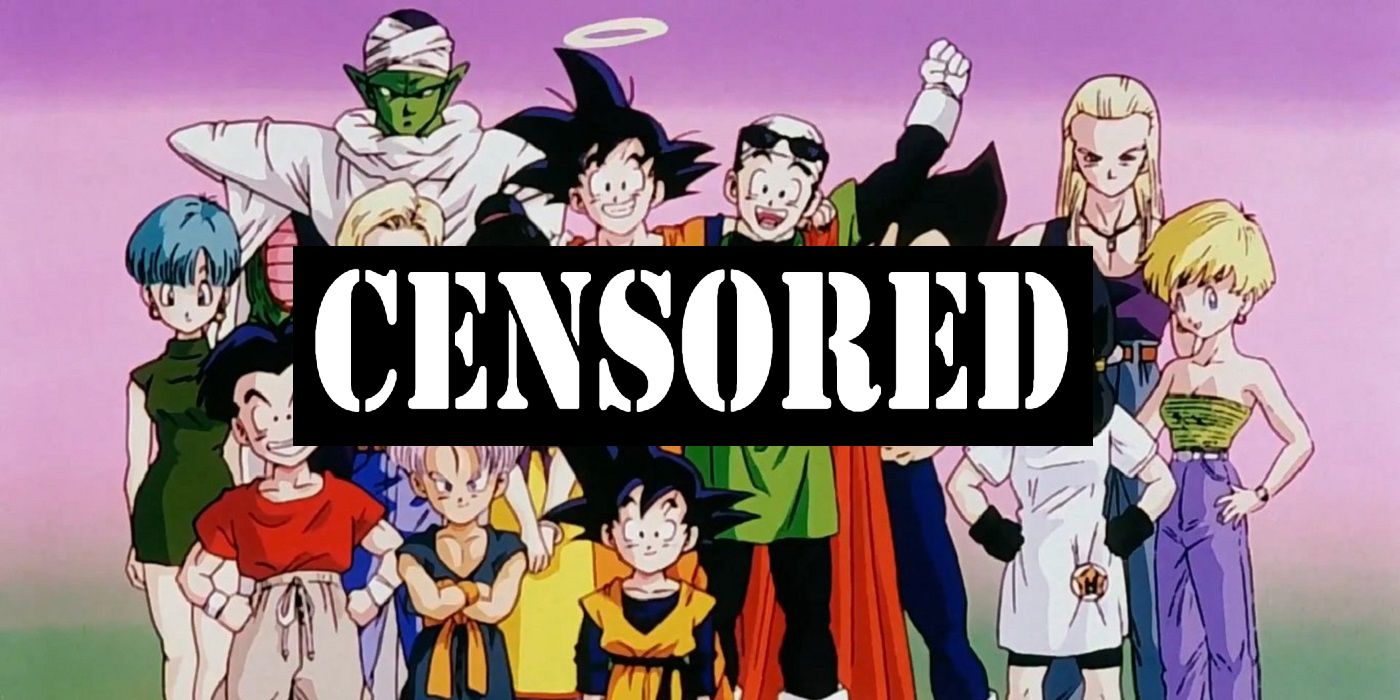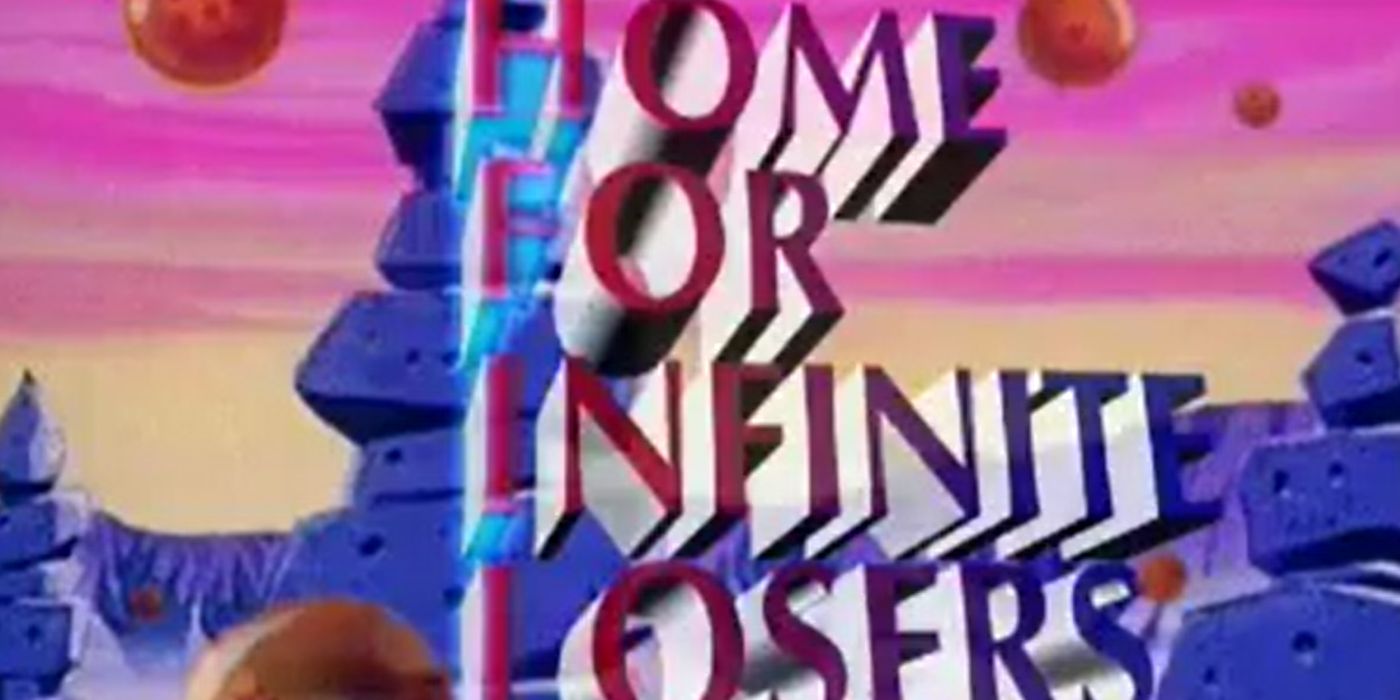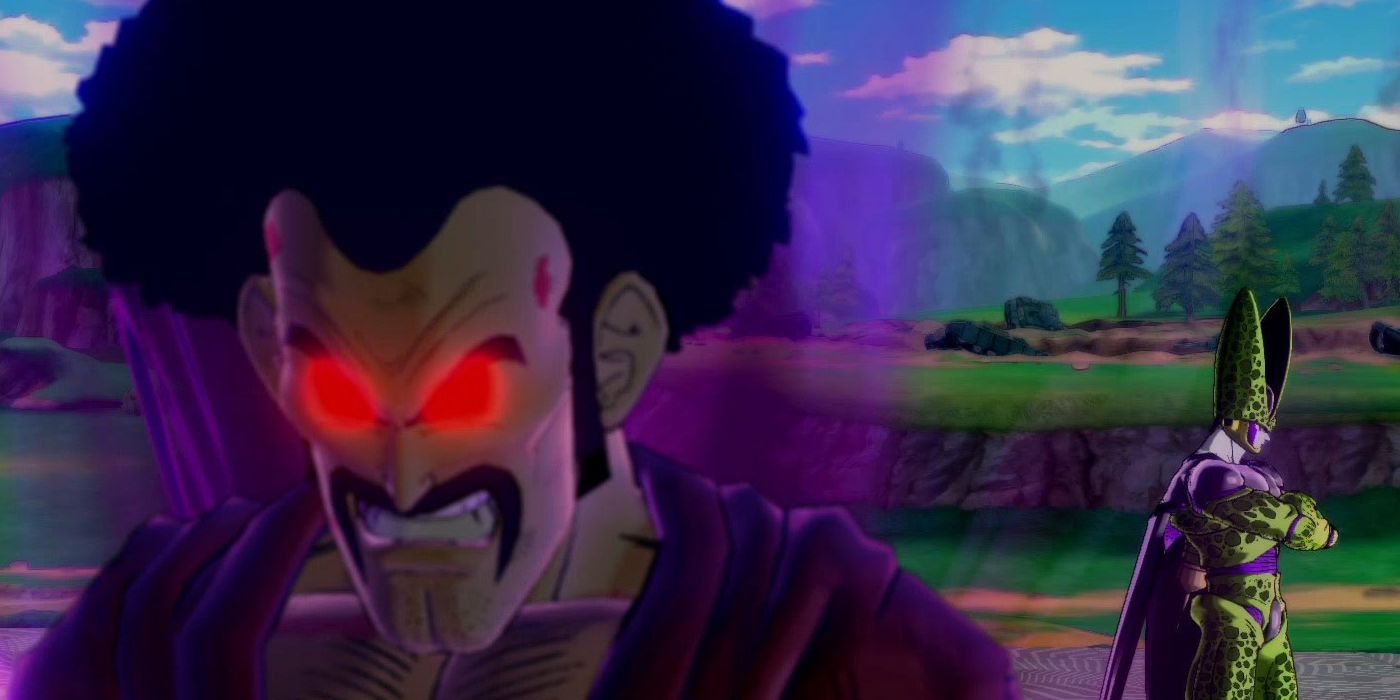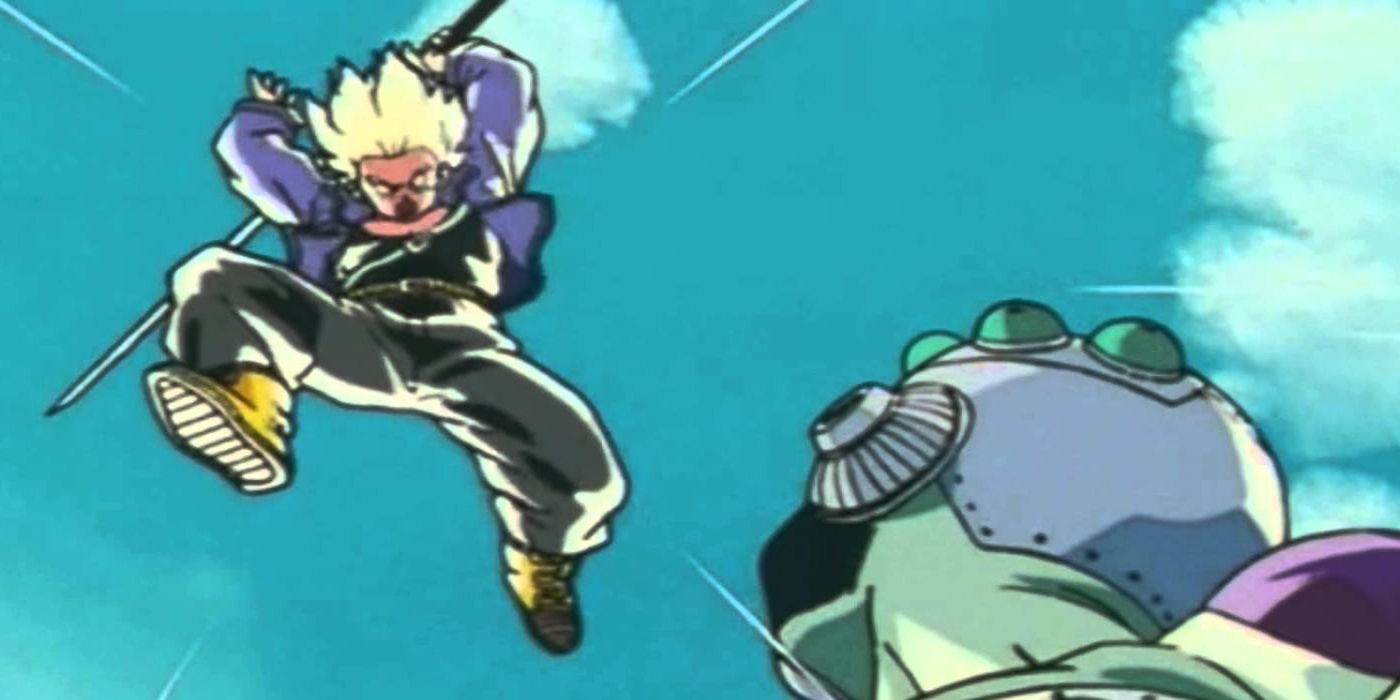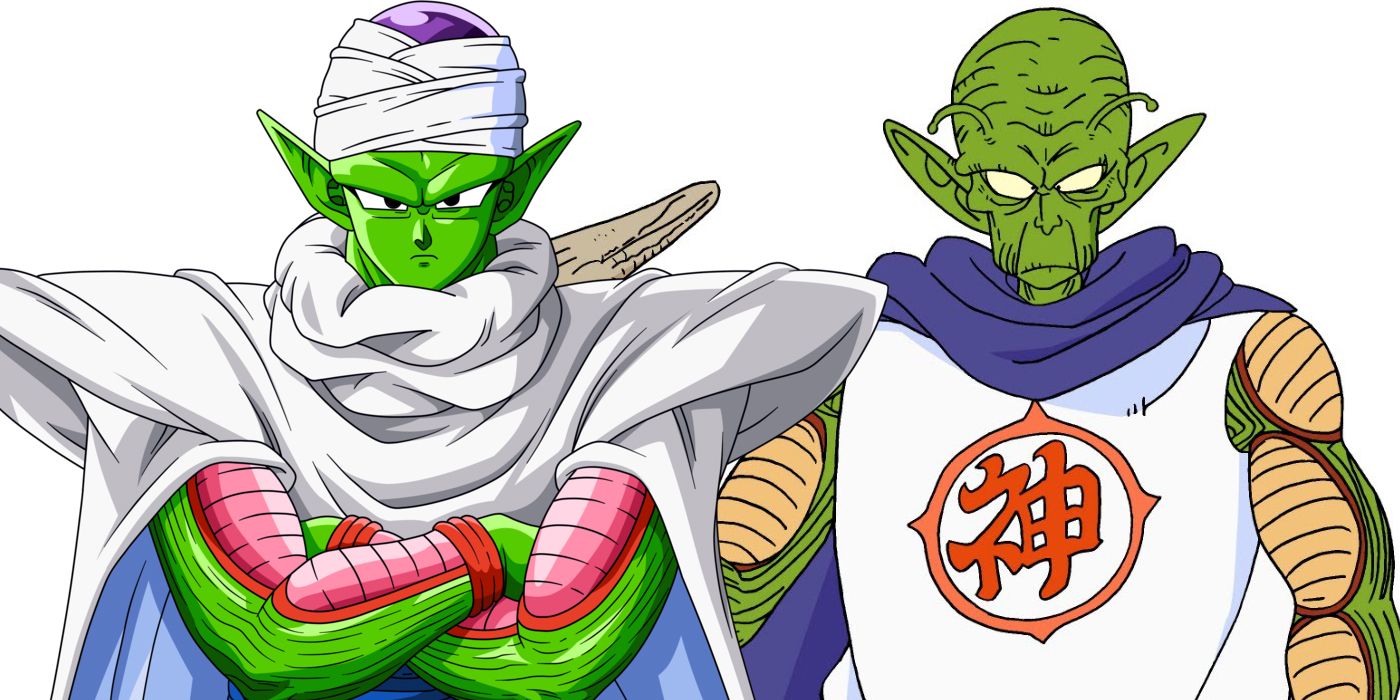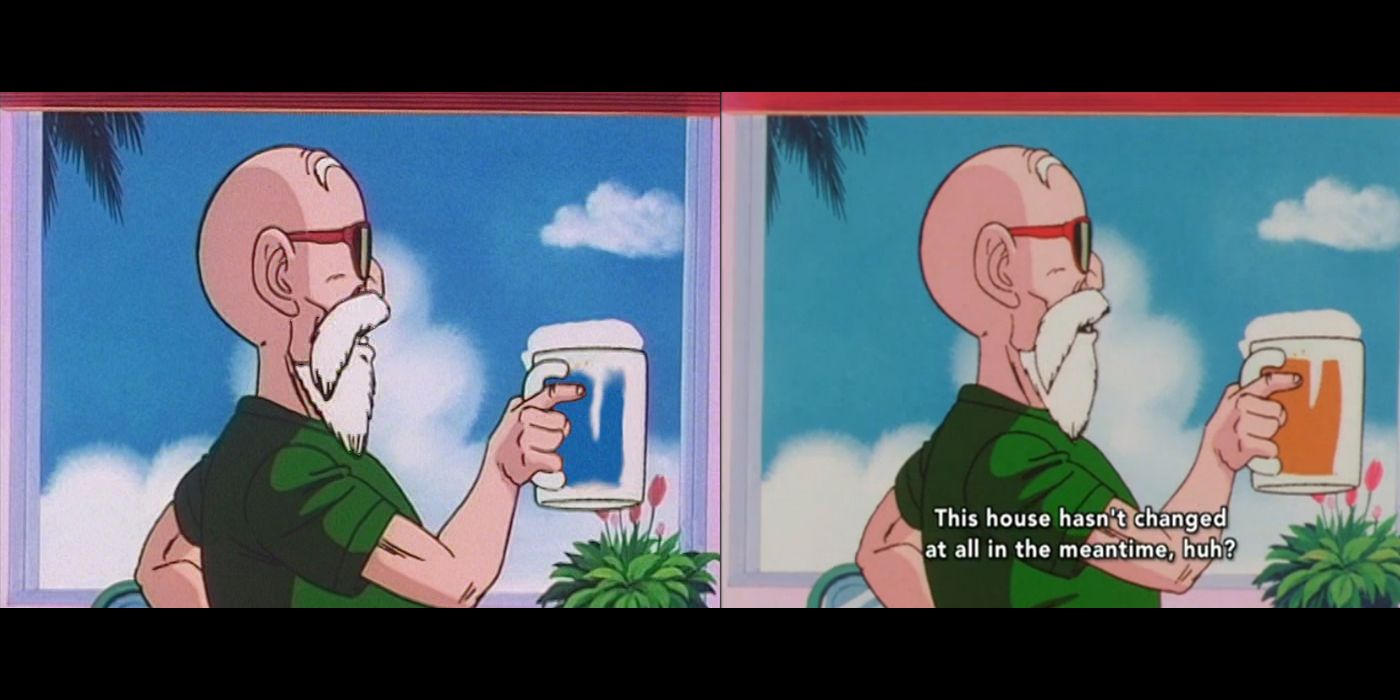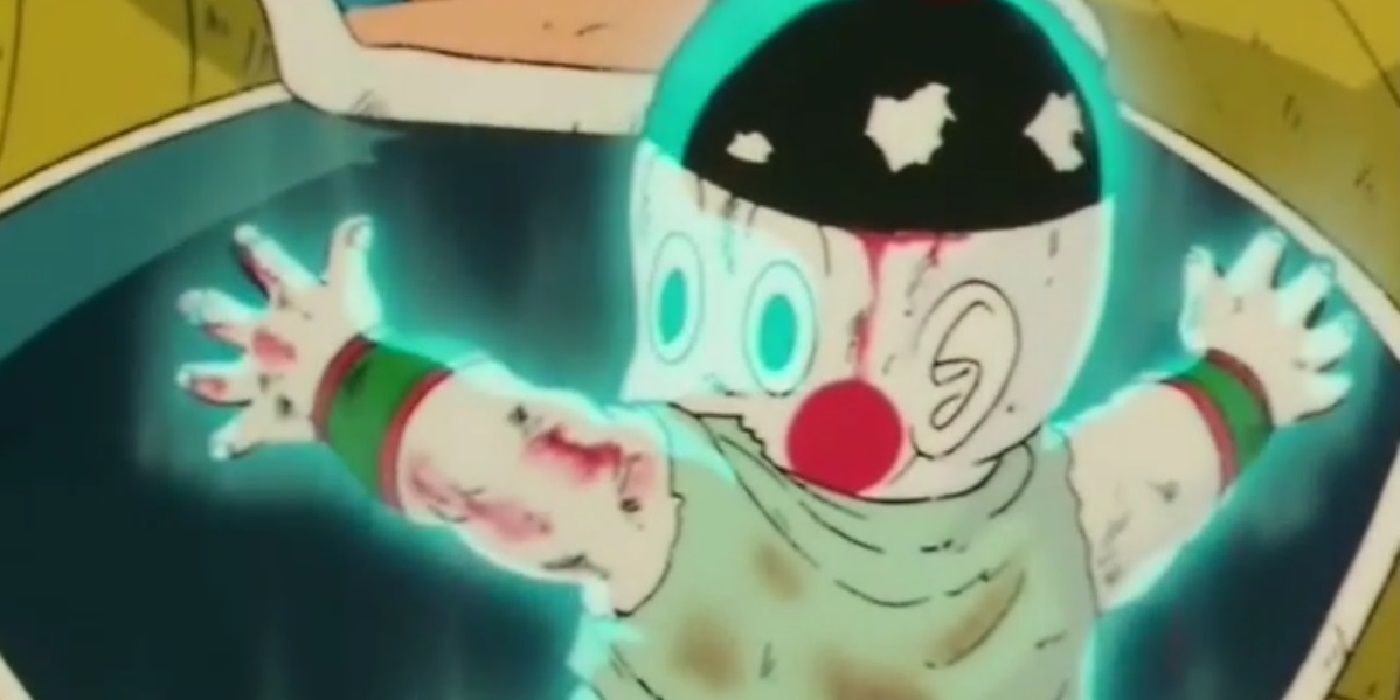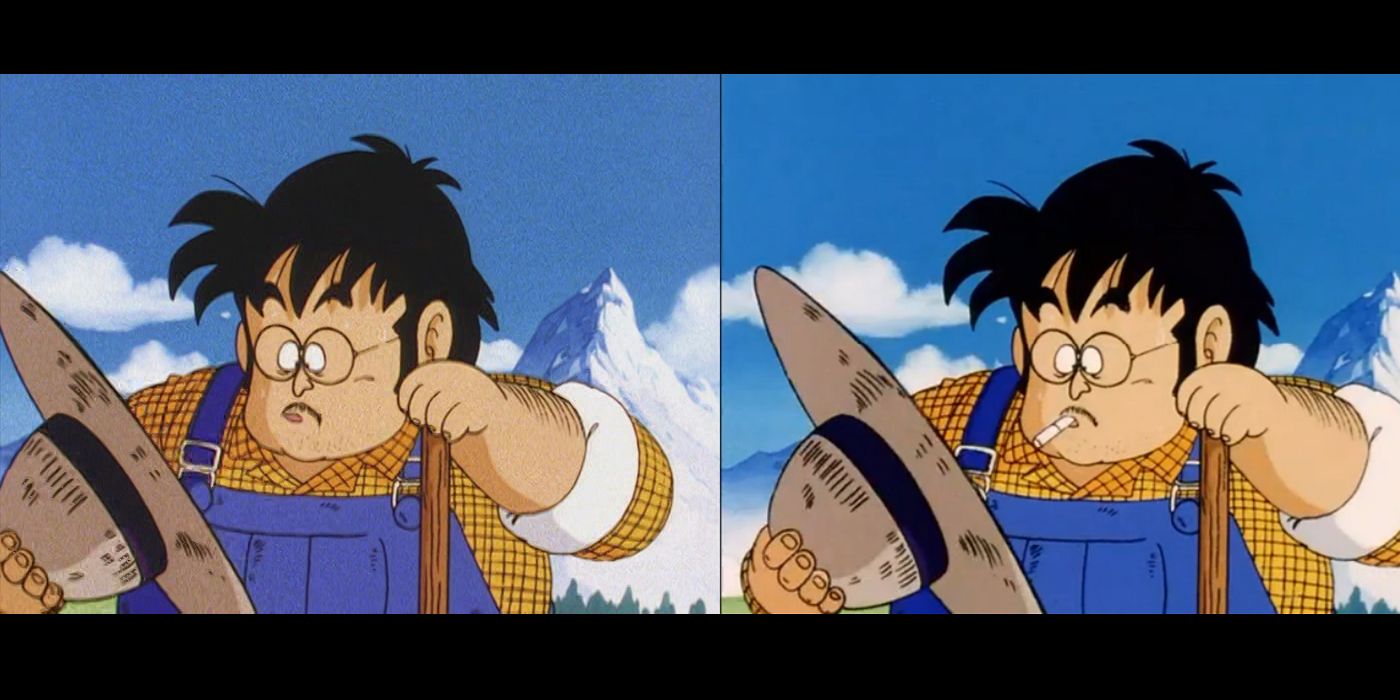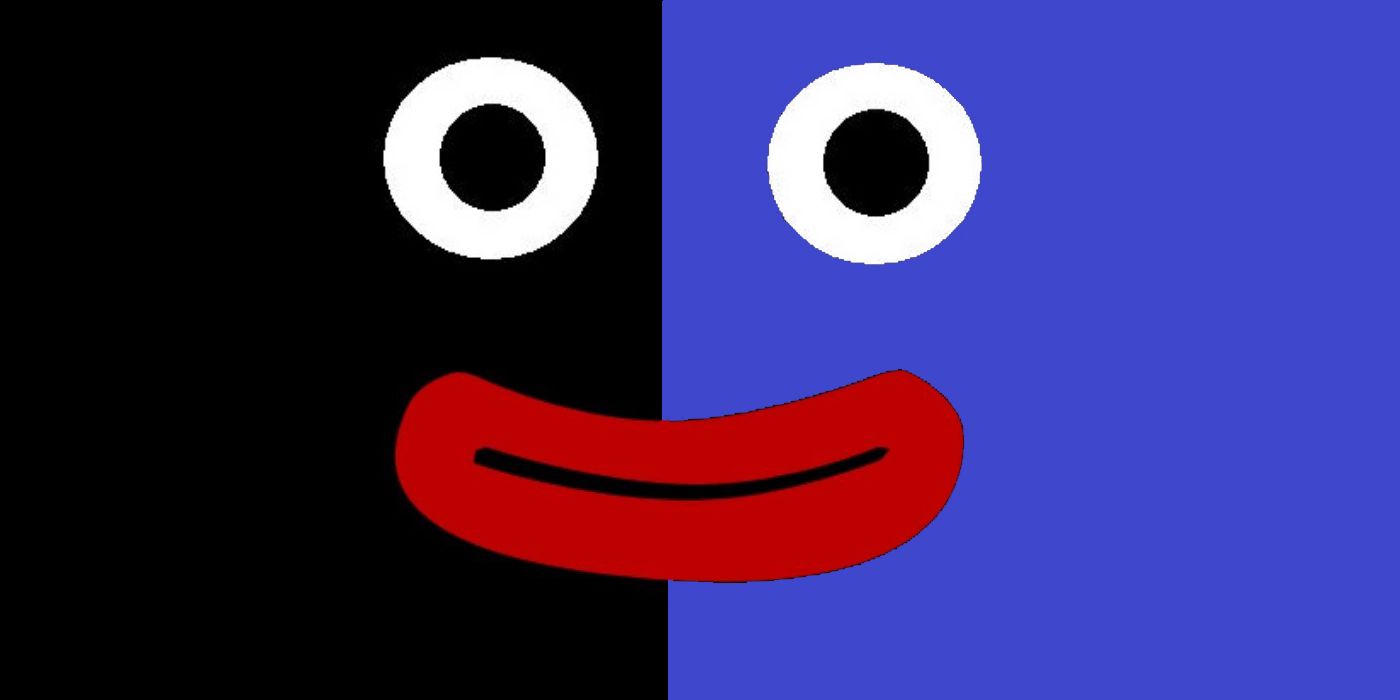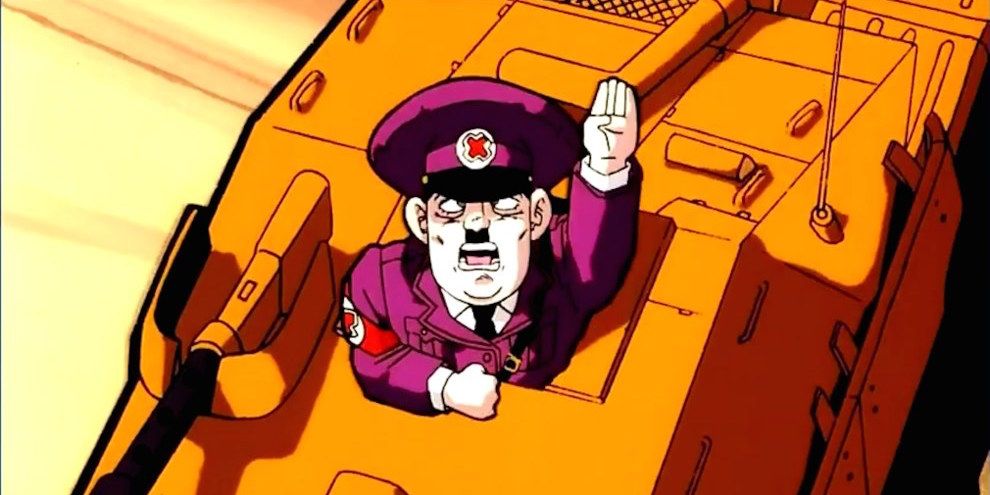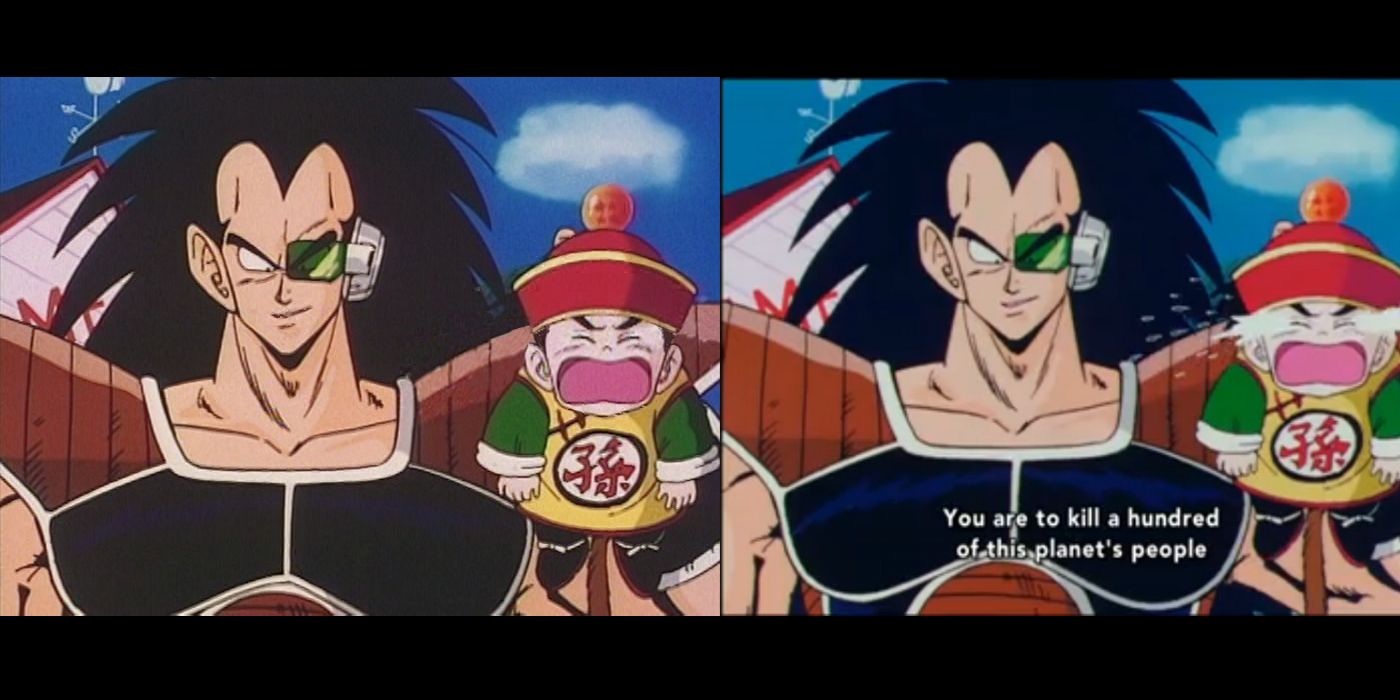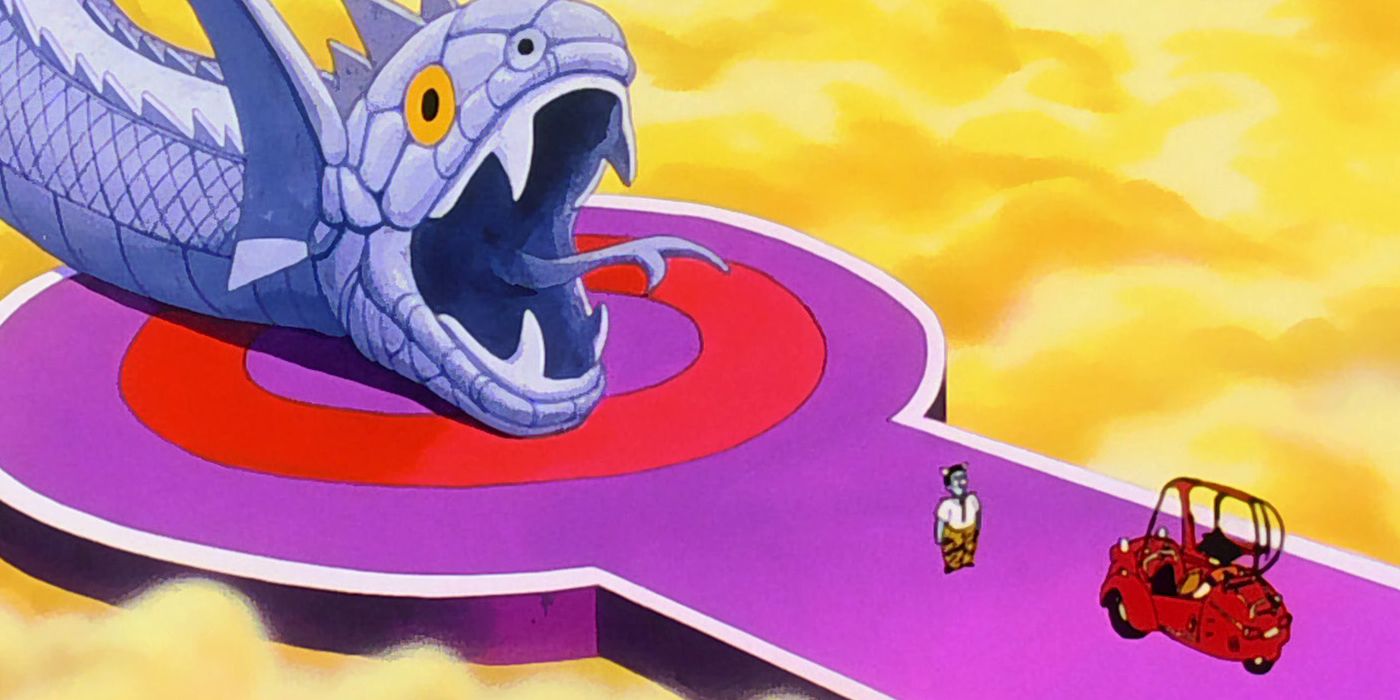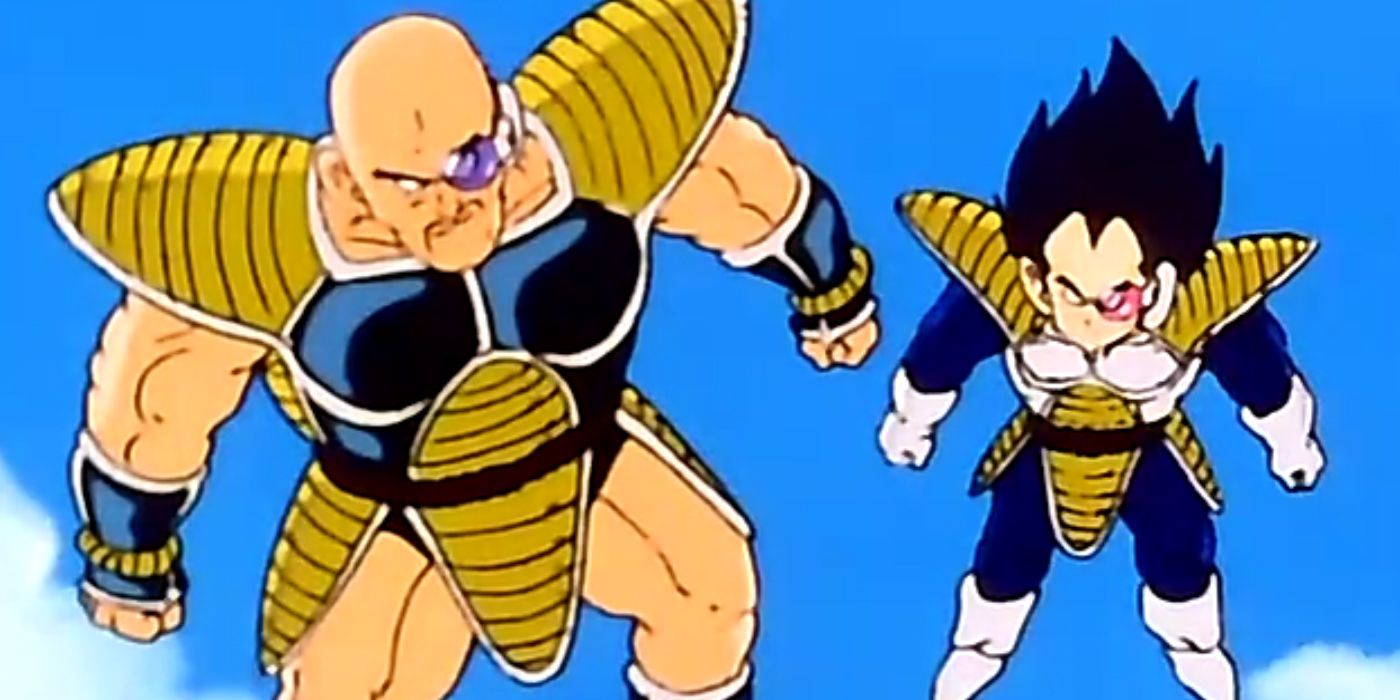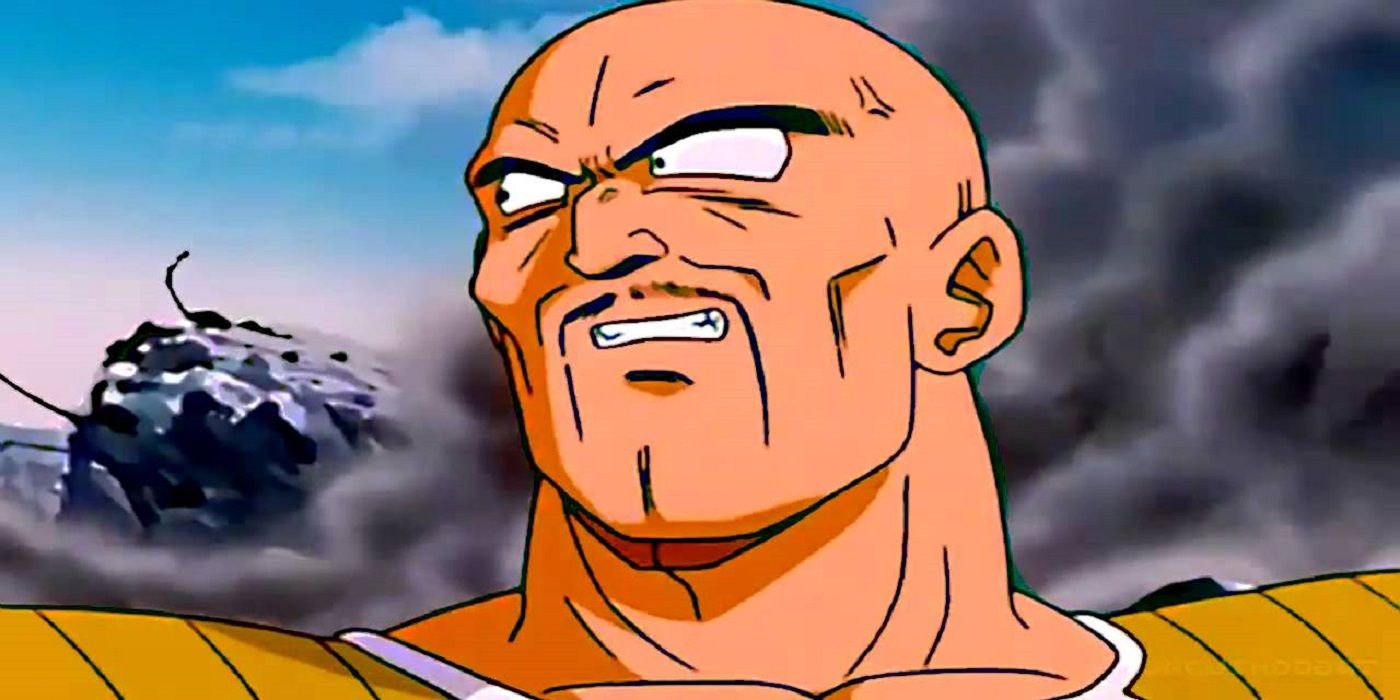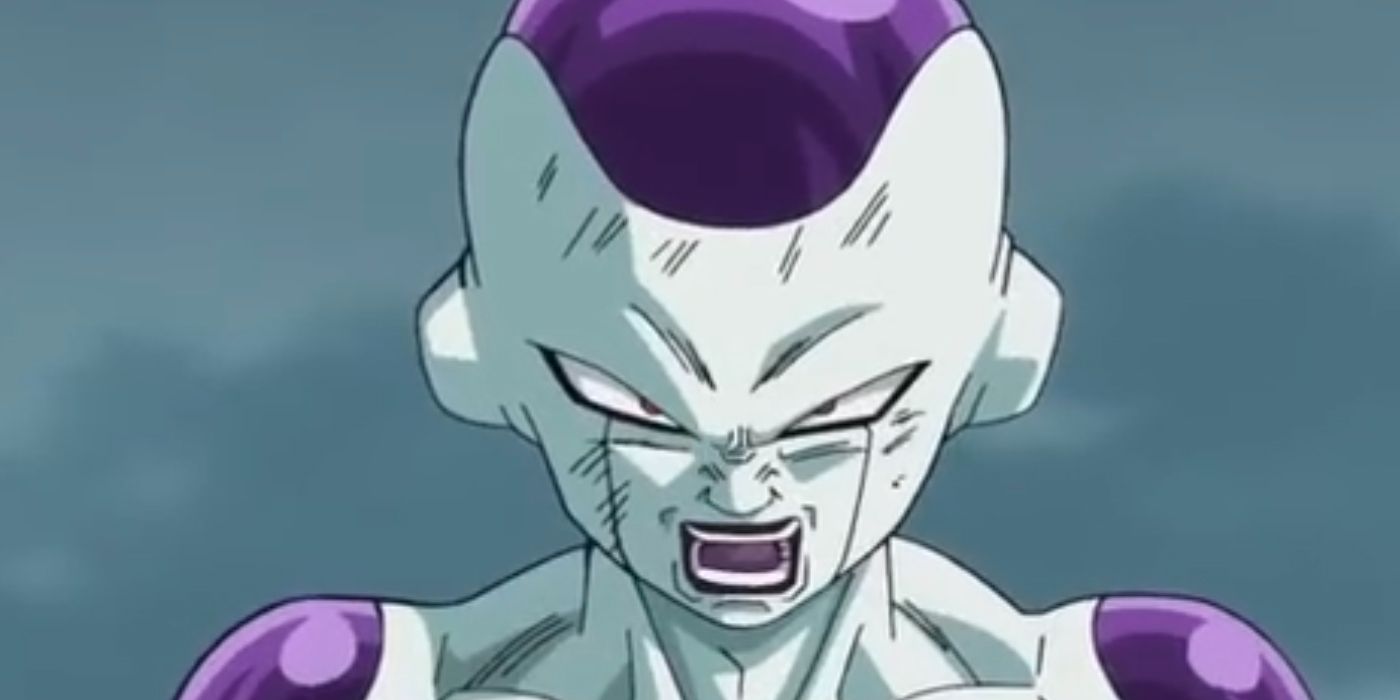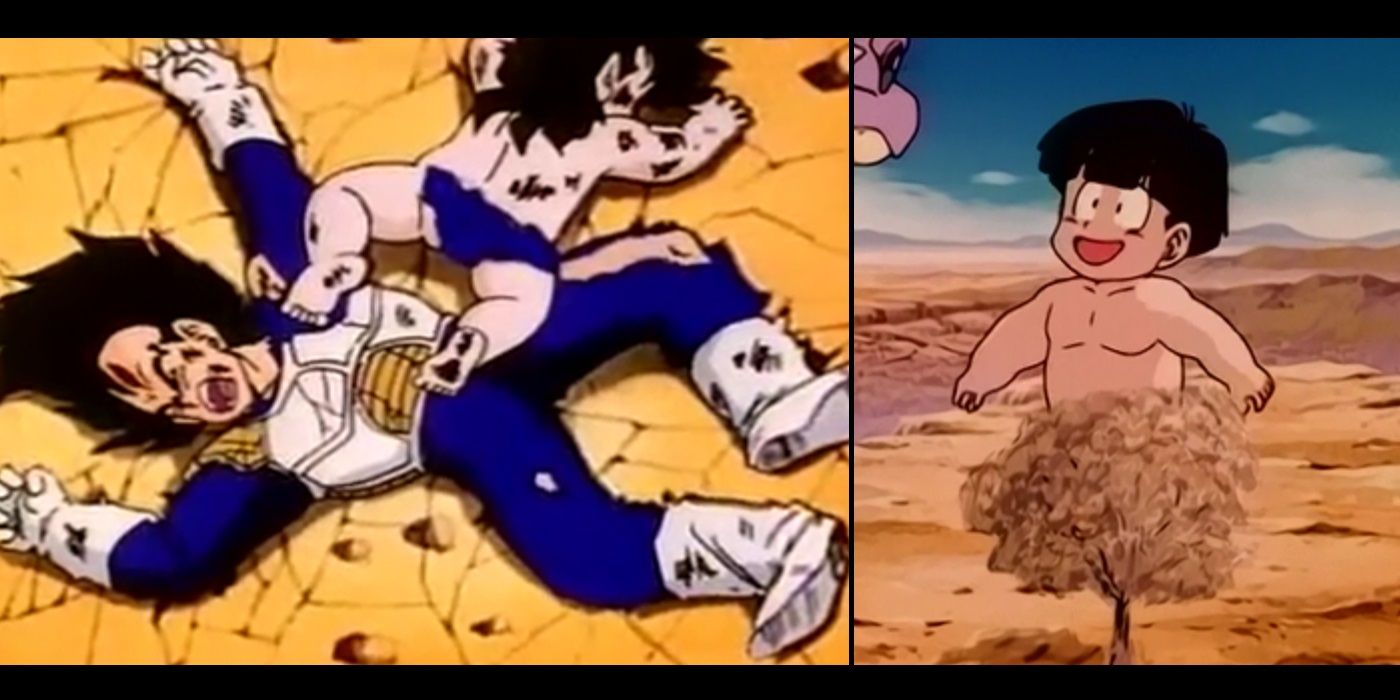With Japanese video games becoming more mainstream in the 1990s, the manga aesthetic became more accepted by the American public. When the Pokémon anime became a surprise hit in 1998, several TV networks began searching for similar properties in Japan that they could present as the "next Pokémon". Before 1998, anime and manga was considered a niche interest, and was maintained by only the most die hard of nerd fans.
Following in Pokémon's footsteps, you had series like Digimon, Cardcaptor Sakura, and Yu-Gi-Oh that used a similar "adolescents controlling monsters and making them fight" premise. These types of series seemed to connect most with fans, and we would see similar shows further down the line.
There was another show that rivalled Pokémon in popularity, but it was so violent that only a company staffed by lunatics would ever think of trying to edit it for a young American audience. This series was Dragon Ball Z, and its massive popularity in Japan led several companies into trying to recreate that success overseas.
In order to make Dragon Ball Z fit for daytime television in America, the show had to undergo some of the most ridiculous edits and cuts in order to tone down the violence. We are here today to examine the madness that is the Dragon Ball Z dub. From the sanitized version of Hell, to Gohan perpetually losing his clothing. Here are 15 Ways Dragon Ball Z Was Censored In America.
15. The Home For Infinite Losers
Dragon Ball Z dealt with the afterlife on a regular basis. After Goku is killed by Piccolo during the fight with Raditz, we get to follow him on his journey through Heaven and Hell. As Goku is travelling across the Snake Way in order to reach King Kai's planet, he falls off, and is trapped in Hell. He must defeat two Ogres (named Goz and Mez) at various challenges, in order to win his freedom.
At least that is what happened in the original Japanese version of the episode. In the American dub, Hell is changed into the "Home For Infinite Losers" (or H.F.I.L). The name change alone is dumb enough when said out loud, but it created a problem with Goz and Mez's attire. The two Ogre's are wearing vests that have "Hell"written upon them, and they are seen throughout the episode.
It is worth pointing out at this point that this episode is filler, it is not based upon anything that happened in the manga, and nothing of importance happens to the overall story arc. Most people would have just skipped this episode. Ocean Productions chose to keep the episode in. So what did they do?
In order to make this episode broadcast-worthy, they edited every single frame that shows the "Hell" vest, and altered it so it said "HFIL". This is no small edit either, as the two Ogres are the focal point of the episode, and appear throughout most of its run-time. A massive amount of time and money went into creating the dumbest edit in TV show history.
14. Hercule Is The Devil
The Cell Games Saga introduced one of the most beloved characters in all of Dragon Ball Z - Hercule.
Hercule is the Dragon Ball Z equivalent of Hulk Hogan. He is a loud-mouthed blowhard, who enjoys cutting promos on his opponents as much as he likes beating them. In regular human terms, Hercule is actually a great fighter. In Dragon Ball Z character terms, he's a total weakling. When it comes down to it, Hercule did actually save the Earth on a couple of occasions, so the Z-Fighters are usually cool with him hogging all of the credit.
In the original Japanese version of Dragon Ball Z, Hercule was named Mister Satan. As can be seen with the Home For Infinite Losers fiasco, any sort of religious name is a no-no for a show intended for adolescents. The name Hercule comes from the French dub, where we has given the name due to Piccolo already having a name similar to Satan.
Recent Dragon Ball Z merchandise has actually attempted to connect both of the names. The American version of Shonen Jump magazine has claimed that Hercule is his real name, whilst Mister Satan is his professional name (similar to how Terry Bollea is the real name of Hulk Hogan, even though everybody knows him by his stage name). Some of the Dragon Ball Z video games have even stated that his full name is Hercule Satan, with his surname never being brought up during the series (kind of like how no one says Tidus' name in Final Fantasy X).
13. Cutting Down The Episodes
The task of bringing Dragon Ball Z to network broadcast standards was a monumental one. The first company to make a proper attempt at doing so was Funimation, who would outsource the job to Saban Entertainment and Ocean Productions. Most of the terrible censorship is the product of Ocean's work, as the job of editing and dubbing the episodes fell onto them.
As fans of the series are aware, Dragon Ball Z is filled with violence. The show is about super-powered alien monks who fight each other to the death, so a little bloodshed is to be expected. The show also has numerous episodes dedicated to the afterlife, along with characters who smoked and drank. While the show doesn't have much female nudity (especially compared to the original Dragon Ball), there was some naked boys that needed covering up.
The show needed so much editing that certain episodes weren't long enough to run. This led to several episodes being edited together in order to create ones that were broadcast length. In the end, the 67 episodes that Ocean had been given to dub were eventually cut into 53. This should give an indication as to how much had to be censored on the Dragon Ball Z.
12. The Piccolo & Kami Connection
The peculiar relationship between Piccolo and Kami was established in the original Dragon Ball, and became an important part of the story in Dragon Ball Z. We will attempt to explain it here...
Before the events of Dragon Ball, Kami was born on the planet Namek. His father sent him off on a rocket ship, as Namek was being devastated by a natural disaster. Kami arrived on Earth, and would eventually become the Guardian (or "God") of the world. In order to take this role, he needed to purge the evil from his body. This created an evil version of Kami, known as Piccolo. Piccolo was sealed away for centuries, but was freed in the present day. Piccolo was killed by Goku, but before he died, he spat out an egg. This egg would hatch the Piccolo we all know and love. Piccolo and Kami share a spiritual bond, and if one dies... so does the other. The Dragon Balls were created by Kami, so if either Piccolo or Kami dies, then they will lose their powers
The reason this is important to know is because Piccolo is killed early on in Dragon Ball Z, causing Kami to die as well. This turns the Dragon Balls of Earth into stone, and forces the trip to Namek for the Frieza Saga. A scene exists in the original Japanese dub of the show which explains everything about the Piccolo and Kami's connection. This was removed from the English dub for unknown reasons, and would cause confusion for the fans when Kami dies at the same time as Piccolo.
11. The Reverse Jesus Effect
What is considered appropriate for broadcast varies widely between different countries. In England, for example, the law is a lot more strict on what can be shown during the day. After nine o clock in the evening, it is a lot less strict. England never had a premium channel like HBO, due to all of the content on HBO shows being fine for regular broadcast (shows like The Sopranos were shown unedited on non-cable television for free). Japan is a lot more liberal with the depiction of cigarettes and alcohol, but is strict when it comes to blood and gore.
A lot of anime series that have been brought to America have ran into the issue of characters drinking alcohol. Shows like Yu-Gi-Oh have had to turn wine into fruit juice, and video games like Chrono Trigger needed to turn booze into soup (with the main character having to win a soup drinking contest).
Dragon Ball Z was forced to turn beer into both glasses of water (with a frothy top), and milk.
10. Don't Fear The Reaper
Death is always a touchy issue when it comes to media intended for children. Some parents might just want to get it over with, and scar their kids for life by showing them Watership Down. It is not an easy thing to discuss or portray, and even someone who is utterly heartless would have a heart time sitting through Big Bird from Sesame Street learning about death.
When you have a show like Dragon Ball Z, where most of the main cast is murdered within the first few story arcs, then death needed to be dealt with straight away. Ocean Productions needed to come up with an answer quickly, as Goku is killed during the first major battle of the series, and goes on an adventure in the afterlife.
The solution they came up with was "Another Dimension". Every time a character was killed in the original dub, they were instead being sent to Another Dimension. The Dragon Balls also wished them back into our universe, rather than back from the dead. This form of censorship was completely ridiculous, and even the most naive of people could see through it. It was dropped in all subsequent dubs.
9. Violence Is Fine (But Smoking Isn't)
Smoking has become increasingly difficult to show in the media. In the old days, shows like I Love Lucy and The Flintstones used to take time out to tell you how amazing cigarettes were. Nowadays, old cartoons like Tom and Jerry need to be censored in order to remove any scene that glamorises smoking.
This is an issue that comes up with a lot of anime shows that are dubbed for international release. Japan is a lot more liberal about depictions of smoking in the media. Characters smoking cigarettes, cigars, pipes, and hookahs are all okay to be shown on kids shows. This has led to major problems when certain anime are brought to America. The biggest example of this is Sanji in One Piece. In the original dub, he smokes constantly. This needed to be changed into a lollipop in every episode of the notoriously terrible 4kids dub of the show.
Dragon Ball Z does not have as much smoking as One Piece (thankfully), but the show needed to edit out several cigarettes. This includes the Farmer from the first episode, the Ox King, and Dr Brief.
8. Blueface Mr. Popo
Mr. Popo is one of the nicest characters in Dragon Ball Z (as long as you ignore his characterization in the Abridged Series). He was sent to Earth from the afterlife in order to serve Kami (and Dende, when he becomes the Guardian of Earth). Mr. Popo takes care of the Lookout, and spends most of his time as a gardener. Despite being a powerhouse (he was able to hold off both Goten and Trunks during the Majin Buu Saga), he acts not as a fighter, but as an adviser and confidante to the Guardian of Earth.
Several anime series have been accused of using "blackface" characters. Blackface is a form of theatre where white actors used to put on black face paint. This is considered racist in modern society, and usually does not show up outside of satire. Both Mr. Popo from Dragon Ball Z and Jynx from Pokémon have been accused of being blackface caricatures. In both cases, they have had their skin tone changed. Jynx was given bright purple skin, and Mr. Popo was changed to being bright blue.
The most surprising thing about this censorship is that it happened in one of the most recent dubs. The dark skinned Mr. Popo was left unaltered in all of the original dubs of the show (he existed alongside the Home For Infinite Losers and Another Dimension). It wasn't until the release of Dragon Ball Kai in the 2010s that blue Mr. Popo was unleashed upon the public.
7. The Great Dictator
Dragon Ball Z has had rare appearances from real life people. Bruce Lee was defeated by Krillin during the original Dragon Ball, and Pirozhki from the Cell Games looks like the famous pro-wrestler called Big Van Vader.
The most surprising person to show up in Dragon Ball Z has to be Adolf Hitler, or as he was known in the franchise, The Dictator.
During the events of Dragon Ball Z: Fusion Reborn, the barriers between life and death have fallen, and all of the evil souls in Hell are allowed to return to Earth in order to wreck havoc. This allows for some of the Z-Fighters' old enemies, like Frieza, to come back for a brief showdown. Not all of the returned evil beings are ones defeated during the show. A zombie version of the Third Reich was restored, along with their leader.
The Dictator and his army are quickly defeated by Gotenks, and are sent right back to Hell.
6. No Tears Raditz
Depicting cigarettes and alcohol in a children's show is straight up illegal. While we can laugh at the ineptitude of how they went about it, we can't fault Ocean for having to do it in the first place. If those edits weren't made, then Dragon Ball Z would never have made it to air.
Some of the edits make absolutely no sense, and are baffling in retrospect. Case in point - Gohan's tears from the first few episodes of the show.
In the first two episodes of Dragon Ball Z, Raditz kidnaps Gohan in order to get Goku to kill one hundred humans. Raditz holds Gohan up by the collar of his jacket as he cries intensely. In the Ocean dub of the episode, Gohan's tears were removed for unknown reasons. This likely wasn't an easy edit, so why they went to the expense of doing so is still a mystery.
5. Goku The Deer Hunter
Some of the edits on this list may seem frivolous. There was one thing left out of the original dub that definitely deserved being cut from the show - the game of Russian Roulette on Snake Way.
Goku's journey to King Kai's planet happened without incident in the original Dragon Ball manga. The anime decided to include several filler events (like the detour to the Home For Infinite Losers), in order to extend the journey. One of these episodes involved a beautiful woman named Princess Snake. She tries to tempt Goku off the Snake Way, and attempted to win his affections. Goku is too loyal to his friends in the other dimension, however, and refuses her advances. He is forced to flee Princess Snake after she turns into a giant serpent, and tries to eat him whole.
Princess Snake has several servants in her domain. The cut scene from the episode involves one of the attendants loading a pistol and playing Russian Roulette. The attendant assures Goku that she has never lost... before putting a bullet through her head. Goku wisely decides not to play.
4. Sunday Evacuation
Nappa and Vegeta are Saiyans from the planet Vegeta. As the Romans did not invade the world of the Saiyans (to the best of our knowledge), they should not know the words used for the days, not their significance.
In the original Ocean dub of Dragon Ball Z, when Nappa and Vegeta land on Earth, they crash through a building. When they leave their pods, Vegeta says that it was "too bad it's Sunday, those buildings would have been filled up tomorrow". Nappa then proceeds to blow up the entire city (confirmed by a shot from space showing the whole area annihilated). Whilst floating over the ruins, Nappa claims "that area may have been evacuated...".
Where to start...
It's one thing for the Saiyans to know the names of the days, as Star Trek pulls a similar trick where everyone speaks in English is due to the crew's Universal Translators (that even translate concepts such as days). What doesn't make sense is how Vegeta knew that the building would be empty on a Sunday. Is everyone in this town a Christian? How does Vegeta know this?
Nappa blowing up the 'evacuated' city is even worse. We just saw people gawking at the Saiyans from a few feet away. Unless they can all run like The Flash, then those people are toast. It was also a pretty quick evacuation for a city that size.
3. Death To The Cargo Robot
When Nappa and Vegeta fight the Z-Fighters, the censoring goes into full effect. Both Yamcha and Chiaotzu are "sent to Another Dimension", as is Piccolo when he sacrifices himself to save Gohan. Tien's noble sacrifice is filled with cowboy references (even though he is a three-eyed monk from fantasy Asia), and he claims that his arm that was torn off can "grow back".
Before the battle begins, several news helicopters show up to report on the battle. Nappa decides to blow them all up. After the first helicopter is destroyed, one of the reporters shouts "they blew up the Cargo Robot". When Nappa blows up the remaining vessels, one of the Z-Fighters (possibly Tien) says "Look I can see their parachutes, they're ok". This is despite the fact that no parachutes are seen.
Where to begin...
Why would a news team possess a Cargo Robot, and why would they need it for an event like this? Are they planning on camping out there? If the Cargo Robot can fly under its own intelligence, then they do they need pilots in the other helicopters? Why didn't Ocean take some money out of the "editing the Ogre's shirts to say H F I L" fund, and put in a few tiny people landing with parachutes?
2. Freiza Loves The Crab Apple
This might be one of the most peculiar scenes to ever be edited out of Dragon Ball Z.
In the episode "The Renewed Goku", Vegeta takes on Freiza in his final form. He launches numerous energy attacks at him, but Frieza does not respond (let alone try to dodge). Vegeta is so distraught that he weeps, for he knows that he cannot defeat Frieza at his current strength. Frieza attacks Vegeta, and beats the absolute crap out of him. Frieza throws Vegeta into a lake, and goes after him. He uses his power to make the water rise, and picks Vegeta up by his neck.
A scene was removed at this point from the original dub. It showed Frieza noticing a crab crawling on Vegeta's back. He decides to eat the crab in one crunchy bite.
The reason for this scene's exclusion is most likely due to an animal rights issue. They should have just went the whole way, and said that Frieza's gastrointestinal tract is actually a gateway to Another Dimension.
1. Gohan's Nudity
There are two things Akira Toriyama loves more than anything in life. They are a) naked Goku, and b) naked Gohan. He loves themed naming too, but not as much.
The original series of Dragon Ball had a lot more nudity than Dragon Ball Z. Bulma was even shown topless during the Fortuneteller Baba Saga. Dragon Ball was a fantasy series that never took itself too seriously. When Dragon Ball Z came along, the series became a science fiction epic that focused on fighting and melodrama.
One thing that did not change in the transition between the two shows was the depiction of Goku and Gohan's nudity. Both Goku and Gohan were shown completely naked on the show, when they were both still under ten years old.
The editors had to get creative with covering them both up. The most common method was to create foliage that would save their modesty. They would also just have clothes drawn on them haphazardly. While these edits may not look very professional, they were integral in getting the show on the air. A few frames of Gohan's five year old dong would have sent this show straight to the Home For Infinite Losers.

